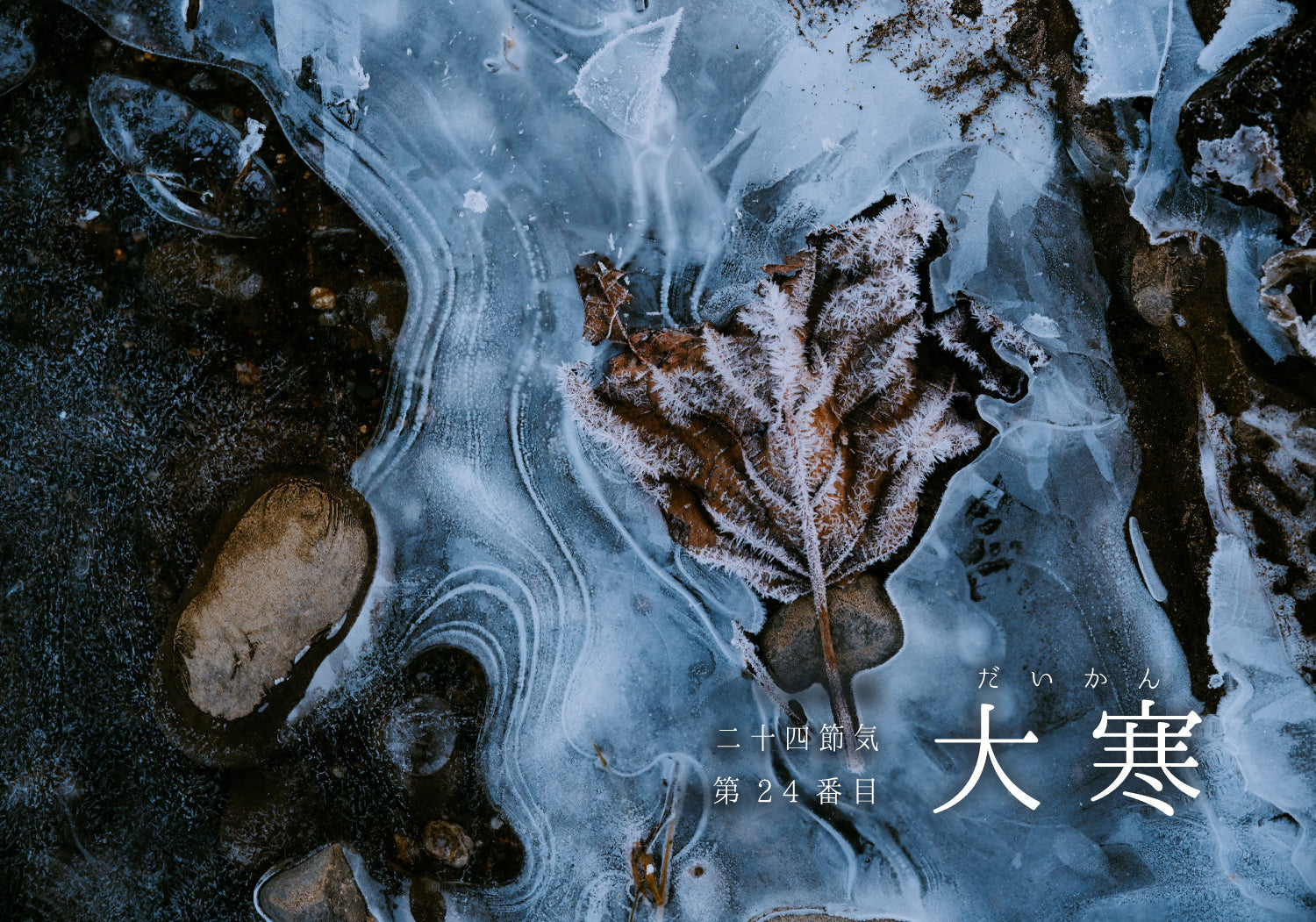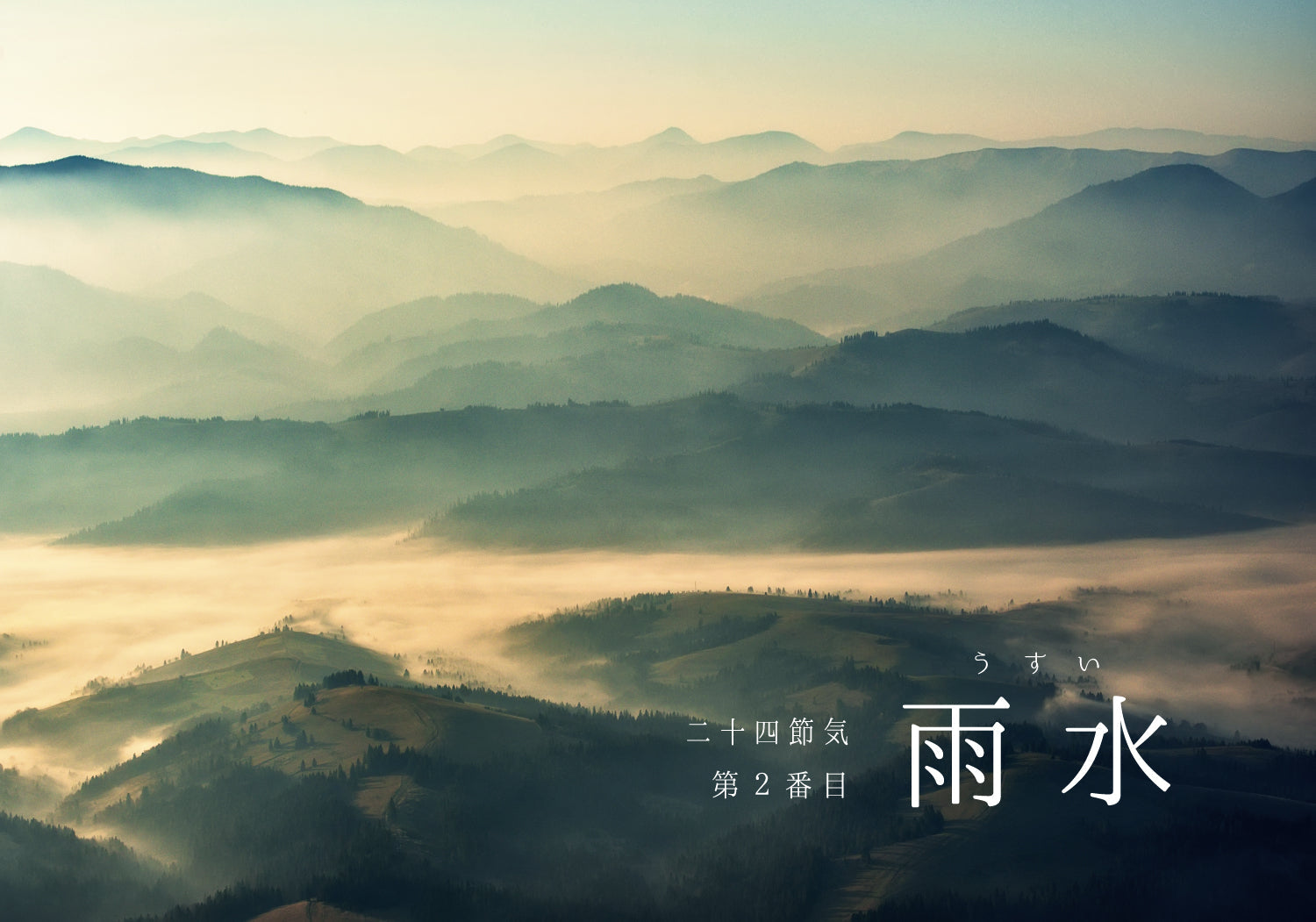Twenty-Four Seasons No. 3 “Keichitsu”
It's the time when insects that have been hunkering down over the winter begin to crawl outside, feeling the warmth of spring.
``Kei'' has a meaning such as ``open, dawn'', and ``蟄'' has the meaning of ``an insect that hides in the winter under the soil.''With each rain, the temperature rises, the fields and mountains sprout new buds, and the sunlight gradually becomes warmer.
Spring vegetables, including wild plants, are starting to appear at supermarkets and greengrocers.
Enjoy the arrival of spring with seasonal ingredients.
Now, I would like to introduce the events that took place during the period of [Keishe] .
1. Komo-zushi
Komo refers to a rug made of straw.
Every year, in early winter in November, ``Komumaki'', or ``Komumaki'', is held all over the country, in which ``Komumaki'' is wrapped around the trunk of a pine tree or other tree. ``Comumaki'' is a traditional pest control method that takes advantage of the wintering habits of pine beetles and pine beetles, which are the natural enemies of pine trees.

When it gets cold, the insects hide in the bushes and overwinter. Then, around the time when the insects begin to move, the oysters are removed and the pests that have been hibernating inside the oysters are exterminated.
``Kumamaki'' is made in early winter. ``Komo-zushi'' is Nakaharu. Each is known as a seasonal feature.
The winter scenery of rows of pine trees covered with strawberries will disappear! ?
This method of exterminating pests has been passed down since the Edo period, but research has shown that it is actually not very effective and attracts only other beneficial insects. Nowadays, it is often performed as a winter tradition.
However, the komo that wraps around the entire tree is not used to prevent pests, but to protect evergreen trees that are sensitive to the cold, and to protect them from frost and snow by preventing branches from breaking under the weight of snow and suppressing leaf discoloration. Sumamaki is still a cherished event.

2. Shunie
``Omizutori'' at Todaiji Nigatsu-do Hall brings spring to Nara
This is a puja held every year from March 1st to March 14th at the Nigatsudo Hall of Todaiji Temple in Nara City.The climax , ``Omizutori,'' is also another name for Shuni-e.

``Shuni-e'' is a ``keka'' memorial service held every year in February of the lunar calendar to remove the impurities of the past year and pray for peace and prosperity for the nation in the new year.
Eleven selected monks called the Rengyoshu repeatedly praise and worship the Eleven-faced Kannon Bodhisattva, confessing all their sins on behalf of the people, and praying for the peace and security of the nation and for a rich harvest. We will hold a puja to pray .
During the journey, late at night on March 12th (around 1:30 a.m. on the 13th), ``Omizutori'' is called ``Omizutori,'' and ``Perfume'' is offered to Kannon from a well called Wakasai. A ceremony is held to pump up the water. A large torch is lit every night to light the way for the Rengyoshu who perform this procession.
Because of its impressive appearance , ``Shuni-e'' is commonly called ``Omizutori'' or ``Otaimatsu.''
It is believed that being exposed to the sparks of a torch will make you happy and healthy, and many people take the embers home with them as talismans.
This memorial service is said to have been held without interruption ever since it was founded in the 4th year of Tenpyo Shoho (752) by the monk Sanetada, a disciple of the priest Ryoben, the founder of Todaiji Temple, and will be held for the 1272nd time in 2023. Count.
3.White Day
Originated in Japan! “White Day” was born from the culture of giving back

White Day is celebrated on March 14th, one month after Valentine's Day.
It is said that men who received chocolates on Valentine's Day return candy or marshmallows to women.
On Valentine's Day, in addition to Honmei chocolates, friends chocolates and gratitude chocolates are given, so on White Day, it is common to return the favor to the person who gave you chocolates, regardless of gender.
To begin with, Valentine's Day is a culture that was introduced from overseas, but the fact that the standard gift is chocolate is unique to Japan.
In Europe and the United States, it is often defined as ``a day when men express their love and gratitude to their wives and girlfriends,'' and they prepare gift cards such as message cards with words of love as well as bouquets of flowers (especially red roses). Eating a meal is considered to be a common way of spending time. In addition, it seems that people often give presents not only to their loved ones or lovers, but also to people who take care of them on a daily basis or to their family members.
In Japan, Valentine's Day and White Day are thought of as a set, but in Europe and America there is no White Day. It is said that ``White Day'' was born in Japan because of the deep-rooted culture of giving something in return when receiving something, such as ``family gifts'' and ``congratulations.'' This is a custom found only in East Asia, such as South Korea and Taiwan.
*
In the Seventy-Ninth Order of the Era, it is expressed as follows.
7th candidate
<Open the Sugomushito>
When hibernating creatures come out of the soil in search of spring sunlight

Hatsuhou, which has the same meaning as ``Keishu'' in the 24 solar terms.
Insects slowly emerge from the soil, lured by the warm spring weather.
You can see the insects crawling out of the soil, basking in the warm sunlight, as if they were ``opening a door.''
Next candidate 8th candidate
<Momo's first laugh (Momo's first laugh)>
When the peach buds open and the flowers begin to bloom

In the past, blooming flowers was expressed as "laughing."
``Yamawarau'' is a seasonal word for spring, and is a description of a gorgeous mountain that has begun to sprout.
The 9th Descendant
<Namushi butterfly (becomes a vegetable butterfly)>
This is the time when the pupa that has survived the harsh winter emerges and is reborn as a gorgeous butterfly, flying lightly.






